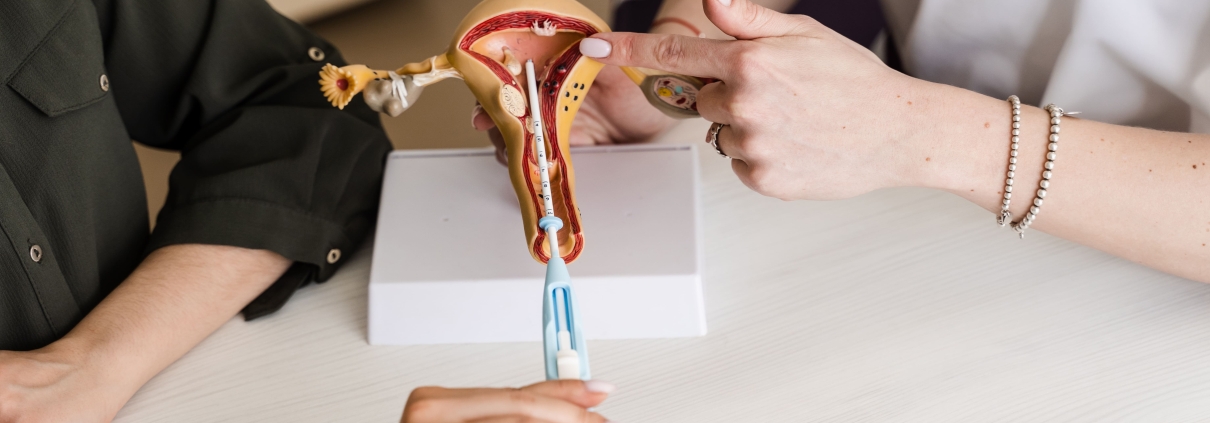Can Uterine Fibroid Embolisation Help Restore Fertility?
Uterine fibroid embolisation and fertility are regularly discussed together, especially when weighing treatment options for fibroids. This procedure works by blocking the blood flow to fibroids, which causes them to shrink over time. This can be a key advantage for women hoping to preserve their ability to become pregnant. The uterus remains intact, and recovery is typically quicker than traditional surgery. That’s why uterine fibroid embolisation and fertility are closely linked in conversations about non-invasive care.
Understanding Uterine Fibroid Embolisation and Fertility
Can Uterine Fibroid Embolisation Improve Fertility?
Fibroids can interfere with fertility, particularly if they distort the uterus or block the fallopian tubes. In some cases, treating them through uterine fibroid embolisation and fertility may benefit women trying to conceive. While this doesn’t guarantee pregnancy, shrinking or removing large fibroids has helped improve fertility outcomes for many patients. Recent studies suggest that about one-third of women become pregnant after undergoing this procedure.
What to Expect After Uterine Fibroid Embolisation and Fertility Treatment
Each person’s experience with uterine fibroid embolisation and fertility can be different. Possible risks include early menopause, especially in women over the age of 40, and a slightly higher rate of miscarriage or preterm delivery compared to women who haven’t had the procedure. However, other women go on to have healthy, full-term pregnancies.
If pregnancy is the goal, it’s crucial to have a conversation with your doctor about uterine fibroid embolisation and fertility. Understanding the balance between fibroid relief and reproductive goals can help guide the best decision forward.
Understanding the Link Between Uterine Fibroid Embolisation and Fertility
When weighing your options for fibroid treatment, it’s natural to have questions about uterine fibroid embolisation and fertility. UFE is a minimally invasive procedure that helps shrink fibroids by cutting off their blood supply. While many individuals have gone on to have successful pregnancies, there are health factors worth understanding before making a decision.
Pregnancy Outcomes After Uterine Fibroid Embolisation and Fertility Treatment
Successful pregnancy after uterine fibroid embolisation and fertility-focused care is possible. Studies suggest that about 30% to 48% of women who try to conceive after UFE become pregnant. But pregnancy outcomes can vary. Some experience healthy, full-term deliveries, while others face increased chances of preterm birth or require a cesarean section.
One concern is how the placenta develops post-UFE. There’s a higher risk of placental issues, which may lead to complications like early delivery. Despite that, many still carry to term without major issues.
Uterine Fibroid Embolisation and Fertility Risks with Advancing Age
Age plays a big part in the conversation around uterine fibroid embolisation and fertility. Older women may face additional challenges, not because of UFE alone, but due to natural age-related changes in fertility. UFE could, however, impact ovarian function, especially in those nearing menopause. This can result in fewer viable eggs, so it’s a good idea to check hormone levels before proceeding.
The miscarriage rate after UFE sits at around 22%, which may sound concerning but is similar to the rate seen in same-age groups who haven’t had the procedure. This means UFE doesn’t necessarily add new risks in terms of miscarriage, especially when other health factors are stable.
Talking Openly About Uterine Fibroid Embolisation and Fertility Plans
Choosing uterine fibroid embolisation and fertility preservation depends on individual goals and timing. If pregnancy is on your radar, it’s vital to have open conversations with a care provider. They can help assess ovarian reserve, review hormone levels, and discuss the best timing for conception. While UFE is not a guaranteed fix for fertility issues, it has shown positive outcomes for many.
Being clear about your hopes and realistic about your body’s natural changes can make the decision easier. With the right support, many people find a treatment path that aligns with their fertility goals.
Uterine Fibroid Embolisation and Fertility: How Does It Compare to Surgery?
When comparing uterine fibroid embolisation and fertility outcomes to traditional surgery like myomectomy, many wonder which option supports pregnancy better. This matters most to those actively trying to conceive or planning for the future.
Myomectomy has often been the first choice for fibroid removal when fertility is a priority. It surgically removes fibroids while keeping the uterus in place. Because of its long-standing use, there’s more fertility-specific research linked to this procedure. However, like most surgeries, it’s invasive. Recovery can take weeks, and there is a risk that fibroids may return.
On the other hand, uterine fibroid embolisation is a non-surgical method that limits fibroid growth by blocking their blood supply. Its appeal lies in quicker recovery, fewer immediate side effects, and preservation of the uterus. But when it comes to uterine fibroid embolisation and fertility, results vary. Some people have become pregnant afterward. Still, there are potential risks, including miscarriage and placental irregularities.
What to Know About Uterine Fibroid Embolisation and Fertility Risks
There are several factors to consider if you’re exploring uterine fibroid embolisation and fertility. Age, fibroid location, and overall reproductive health all play a role. There’s a chance of ovarian function being affected for mature women, which could lower fertility potential. Pregnancy after UFE may also come with a higher likelihood of cesarean delivery and preterm birth in some cases.
Despite those concerns, uterine fibroid embolisation remains a viable option for some. Its non-invasive nature can be an advantage, especially when avoiding major surgery is a top priority. People who are not ideal candidates for myomectomy, or who prefer a shorter recovery, may see UFE as a balanced alternative—if pregnancy outcomes are thoroughly discussed in advance.
Choosing Between Uterine Fibroid Embolisation and Myomectomy for Fertility
If restoring fertility is the main focus, and especially for those under 35, myomectomy might offer more predictable outcomes. But uterine fibroid embolisation and fertility shouldn’t be ruled out entirely. UFE provides relief from fibroid symptoms and opens the door to pregnancy for many people—just with different risks and success rates than surgery.
Deciding what’s best requires more than a broad comparison. Reproductive goals, fibroid characteristics, overall health, and age all influence the choice. If you’re weighing uterine fibroid embolisation and fertility concerns, talk to both a radiologist and a gynecologist. Their insights can help tailor the right plan for your situation—one that fits both your health and your hope for having children.
Take the Next Step Towards Informed Fertility Care
Navigating the complexities of uterine fibroid embolisation and fertility necessitates careful consideration and expert guidance. Whether you’re exploring UFE as a potential path or comparing it with surgical options, understanding the nuances can significantly influence your reproductive journey. At Minima Radiology, our specialised team is committed to providing you with the insights and support needed to make informed decisions tailored to your fertility goals.
Don’t let uncertainties stand in your way. Contact Minima Radiology today to discuss your options and gather the vital information needed to move forward with confidence. Your pathway to empowered fertility care begins with the right conversation.





Leave a Reply
Want to join the discussion?Feel free to contribute!